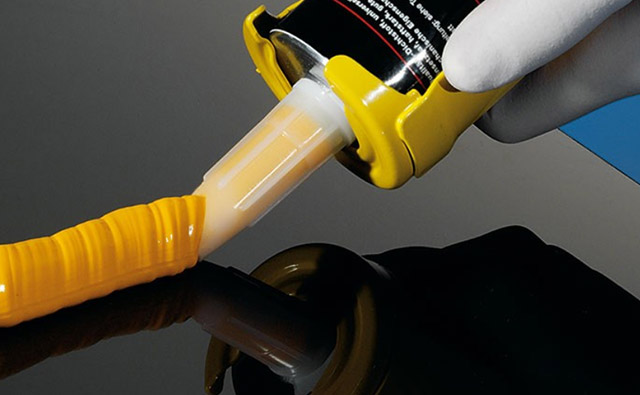Industry News, Adhesives & Sealants & Tackifiers
Interview: The situation with bio-based adhesives is still in flux

Industry News, Adhesives & Sealants & Tackifiers

Image: ©ifam.fraunhofer.de
Dr. Matthias Popp, Group Leader for Adhesives Formulation, Fraunhofer IFAM, on current trends in adhesives and the situation regarding bio-based adhesives.
Dr. Matthias Popp: The automotive industry needs adhesives that offer a combination of high elongation at break and high strength for use in both the body shell and assembly. This is because a growing number of different construction materials having different coefficients of thermal expansion have to be joined together. Also on trend at the moment are 2K adhesives which have a long open time and can cure rapidly at a relatively low temperature. Thermal conductivity is a further functionality which is moving increasingly centre-stage. The greater heat being generated nowadays in electrics and electronics – and not just in electric vehicles – needs to be dissipated. This role could be taken on by highly filled adhesives and sealants.
Popp: Bio-based raw materials seem to be establishing themselves more and more. However, I personally think it is too soon to talk of a real trend in favour of bio-based adhesives, one of the reasons being that the situation is still very much in flux. In some areas, e.g. polyurethanes made with bio-based polyols or, in the case of epoxies, products made with cashew shell oil, renewable raw materials have long been state of the art. In others, e.g. lignins, current research shows that there are still a number of obstacles preventing large-scale use in adhesives.
Popp: In terms of total area of land under cultivation, renewable raw materials for polymers and especially adhesives pose no threat at all to food production. Nonetheless, each case should always be examined on its own merits. Publicly funded research programmes are increasingly working with “scraps” and by-products, such as bran, lignin, eggshells and chitosan.
Popp: An overview of the composition of reactive adhesives and sealants, with a special emphasis on an understanding of structure-effect principles. And naturally, an opportunity to share experiences with colleagues from other sectors as well.
The EC Seminar Composition of reactive adhesives and sealants on November 13 in Amsterdam will familiarise you with the most important types of adhesives and sealants. The seminar will focus on the composition and ingredients of the different kinds of adhesives with their chemical structures and functional groups. Using practical formulation tips, you will analyse guide recipes and patent examples and learn to calculate key recipe parameters step by step.